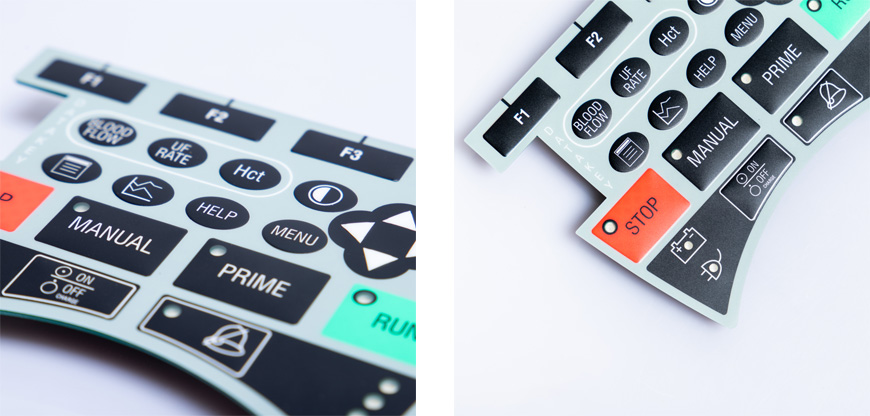
In today's technology-driven world, electronic devices have become an integral part of our daily lives. Whether it's a microwave oven, a TV remote control, or a high-tech medical device, these gadgets rely on a crucial component known as a membrane switch PCB. In this comprehensive guide, we will delve into the world of membrane switch PCBs, exploring what they are, how they work, their applications, and much more.

A membrane switch PCB, often referred to simply as a membrane switch, is a thin, flexible, and cost-effective electronic interface. It serves as a user interface for a variety of electronic devices, providing a means for users to input commands or interact with the device.
The basic structure of a membrane switch consists of multiple layers of flexible materials, including polyester or polyimide, printed with conductive traces. When a user presses a button or a specific area on the switch's surface, it flexes and makes contact with the underlying conductive traces. This contact is registered as an electrical signal, which is then processed by the device's control circuitry.
1. Cost-Effectiveness
One of the primary advantages of membrane switch PCBs is their cost-effectiveness. Their simple design and low manufacturing costs make them an attractive choice for various industries.
2. Durability
Despite their thin and flexible nature, membrane switches are surprisingly durable. They can withstand millions of actuations without losing their functionality, making them ideal for applications that require frequent use.
3. Customizability
Membrane switches are highly customizable in terms of design, shape, and graphics. This makes them suitable for branding and ensuring a user-friendly interface.
1. Industrial Control Panels
Many industrial machines and equipment use membrane switches for control panels due to their durability and resistance to environmental factors.
2. Medical Devices
In the medical field, membrane switches are used in various devices, such as patient monitoring systems and diagnostic equipment.
3. Consumer Electronics
From TV remote controls to microwave ovens, membrane switches are commonly found in consumer electronics for their user-friendly interfaces.
When selecting a membrane switch PCB for your application, several factors need to be considered:
1. Environmental Conditions
Ensure the switch can withstand the environmental conditions it will be exposed to, such as moisture, temperature, and chemicals.
2. Actuation Force
Consider the required actuation force for your application to provide a comfortable user experience.
3. Customization
Evaluate the need for customized graphics, backlighting, and integration with other components.
The manufacturing process of membrane switches involves several steps, including design, printing, assembly, and testing. Each step is crucial to ensuring the final product meets quality standards.
Membrane switch PCBs play a pivotal role in our daily lives, offering an intuitive interface for various electronic devices. Their cost-effectiveness, durability, and customizability make them a popular choice across industries. As technology continues to advance, we can expect to see even more innovative uses for membrane switches.
1. Are membrane switches waterproof?
Yes, many membrane switches are designed to be waterproof or resistant to moisture, making them suitable for outdoor or industrial applications.
2. Can membrane switches be used in harsh environments?
Yes, membrane switches are known for their durability and can withstand harsh environmental conditions, including extreme temperatures and exposure to chemicals.
3. Are membrane switches easy to clean?
Yes, membrane switches are easy to clean and maintain, making them suitable for applications where hygiene is essential, such as medical devices.
4. How long do membrane switches last?
Membrane switches can last for millions of actuations, ensuring a long lifespan for the devices they are used in.
5. Can membrane switches be customized with specific graphics and colors?
Absolutely. Membrane switches can be customized with various graphics, colors, and backlighting options to meet the specific branding and design requirements of a product.